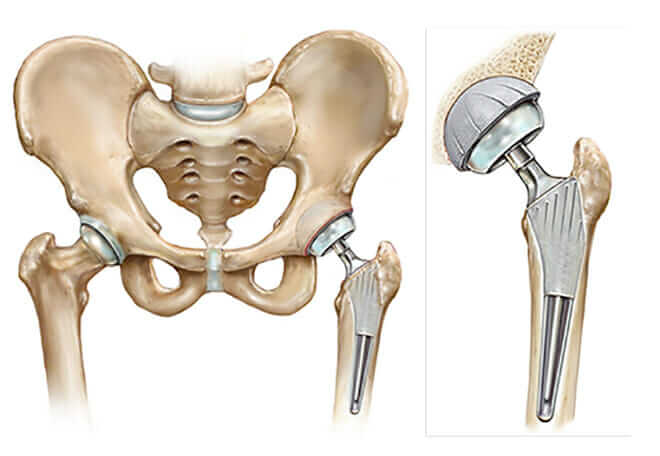
Knee replacement
Knee replacement surgery also known as knee arthroplasty can help relieve pain and restore function in severely diseased knee joints. The procedure involves cutting away damaged bone and cartilage from your thighbone, shinbone and kneecap and replacing it with an artificial joint (prosthesis) made of metal alloys, high-grade plastics and polymers.
Hip replacement
Hip replacement involves removal of the damaged sections of your hip joint and replacing them with parts usually constructed of metal, ceramic and very hard plastic. This artificial joint (prosthesis) helps reduce pain and improve function. Also called total hip arthroplasty, hip replacement surgery might be an option for you if your hip pain interferes with daily activities and nonsurgical treatments haven’t helped or are no longer effective. Arthritis damage is the most common reason to need hip replacement.


Why Joint Replacement is Done?
Arthroplasty may be used when medical treatments no longer effectively relieve joint pain and disability. Some medical treatments for osteoarthritis that may be used before arthroplasty include:
- Anti-inflammatory medicines
- Pain medicines
- Limiting painful activities
- Assistive devices for walking (such as a cane)
- Physical therapy
- Cortisone injections into a knee joint
- Viscosupplementation injections
- (to add lubrication into the joint to make joint movement less painful)
- Weight loss (for obese people)
- Exercise and conditioning
People who have arthroplasty generally have substantial improvement in their joint pain, ability to perform activities, and quality of life.
Most joint surgery involves the hip and knee, with surgery on the ankle, elbow, shoulder, and fingers being done less often.
